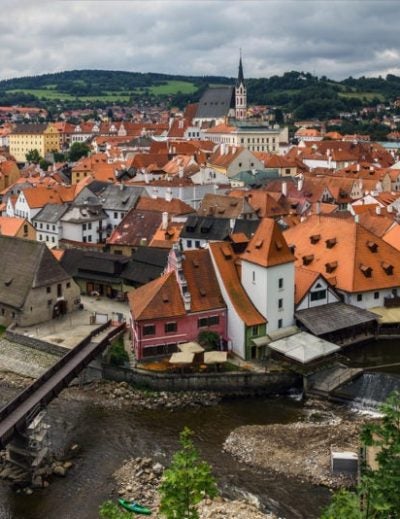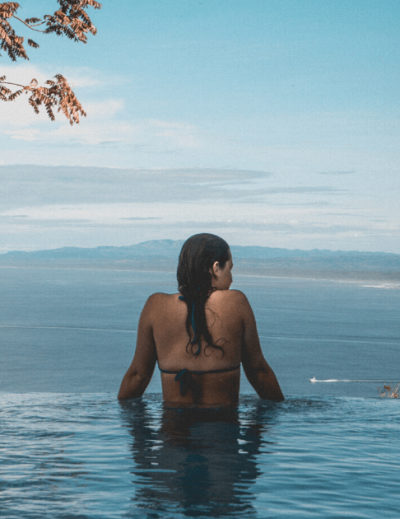Madagascar Travel Guide: Interesting facts about Madagascar
These interesting facts about Madagascar are sure to help you prepare for your trip to the enchanting ‘Land of Baobabs’. Madagascar lies 400 kilometres off the coast of East Africa and is well-known for its incredible wildlife. In fact, many plan a trip to Madagascar just to meet the island’s most famous inhabitant: the lemur! Whether you’re heading to Madagascar for the wildlife, incredible landscapes or authentic local culture, read on to discover our Madagascar travel guide.
Climate

Madagascar is vast. In fact, it’s the world’s second-largest island country. Covering an area of 592,800 square kilometres, you can expect to encounter all kinds of weather and landscapes if you travel to Madagascar. One of the most helpful Madagascar travel tips is to dress for the weather. This all depends on where you are travelling to on the island. A general rule of thumb is that the east is much wetter than the west coast.
Facing the Indian Ocean, the east coast is home to lush rainforests, national parks and lots of wildlife. Indeed, it’s the best region of Madagascar for spotting lemurs. But, this verdant landscape comes with its fair share of rain. December and January are Cyclone Season on the east coast, so be sure to pack some waterproofs to protect you from the short, sharp showers.
On the other hand, the west coast is much drier, home to immense arid landscapes. It’s here you’ll find the amazing baobab trees, so characteristic of Madagascar. Furthermore, in the highlands, the weather is much more temperate but can get quite cold at night. Therefore, if you’re taking a tour of Madagascar, you’ll need to pack for a variety of climate conditions. Layers, waterproofs and sturdy walking shoes are recommended.
Getting around

Due to its huge size and relative lack of infrastructure, it can be tricky and time-consuming to get around Madagascar. Despite this, the diversity and landscapes of this country make effort more than worth it. Generally, it’s recommended to take a guided tour of the country rather than attempt to self-drive through Madagascar.
If you spend any time travelling through Madagascar, you’ll likely get to know the RN7 highway. This vast road connects the capital of Antananarivo with Tulear, in the south. Covering 980-kilometres, it’s the main artery of the country and a popular sightseeing route. On the other hand, if you’re short on time, internal flights are available in some regions of the country, although you’ll miss out on seeing the diversity of Madagascar’s landscapes if you choose to fly.
Local customs

At least 20 ethnic groups make up the population of Madagascar. Therefore, you’ll find countless opportunities to discover unique local traditions and customs. Whilst most of the population speak Malagasy, French is also widely spoken and understood. It should be noted that Madagascar is underdeveloped and much of the population live in poverty. Here are some interesting facts about Madagascar’s local customs and etiquettes to keep in mind:
- If you travel to rural areas, find out about any local taboos or ‘fady’ as they are known. These non-religious ancestral beliefs are very important to locals and you should refrain from breaking any taboos whilst visiting local communities. Some examples of fady include prohibiting eating certain foods, wearing certain colours or disturbing local rivers or lakes.
- Ask permission before taking photos of anyone. Your guide will be able to translate the request. Most locals are more than happy to have their photos taken but don’t assume this is the case. Be aware that you should never take photos of tombs without permission.
- Respect for elders is an important pillar of Malagasy culture. Keep this in mind when mingling with locals.
- Be wary about giving money to beggars. It can be difficult to witness poverty, so perhaps come prepared with essential items or small gifts to hand out at local villages or bring a few footballs for the local children to play with. Try to think of the impact on the community as a whole when giving to those less fortunate than yourself.
Money matters

The currency in Madagascar is the Malagasy ariary, although euros are widely accepted for tourist-based activities. ATMs are available in the larger cities only, so always carry enough cash to cover you until you’re back in the city. It’s customary to tip for any services, even if that’s just giving directions, so carry small bills (200ar, 500ar) in case you require assistance when you’re out and about.
Health

Some of the most important travel tips and interesting facts about Madagascar are about staying healthy during your trip. If you follow some general guidelines you shouldn’t have any health issues to ruin your Madagascan adventure:
- Visit your doctor before you travel for vaccination advice
- Take precautions against malaria (prophylaxis, repellent, mosquito nets)
- Consider carrying antibiotics with you in case of any bacterial infections
- Carry and use hand sanitiser, especially before eating
- Use sunscreen – the sun can be very strong
- Drink bottled water only
- Avoid raw foods/ice/uncooked vegetables etc.
With these interesting facts about Madagascar, you can feel prepared to explore this enchanting country. One of the most unique, biodiverse and friendly places on the planet, plan your trip to Madagascar today on our official website:
Exoticca – your online travel agent


